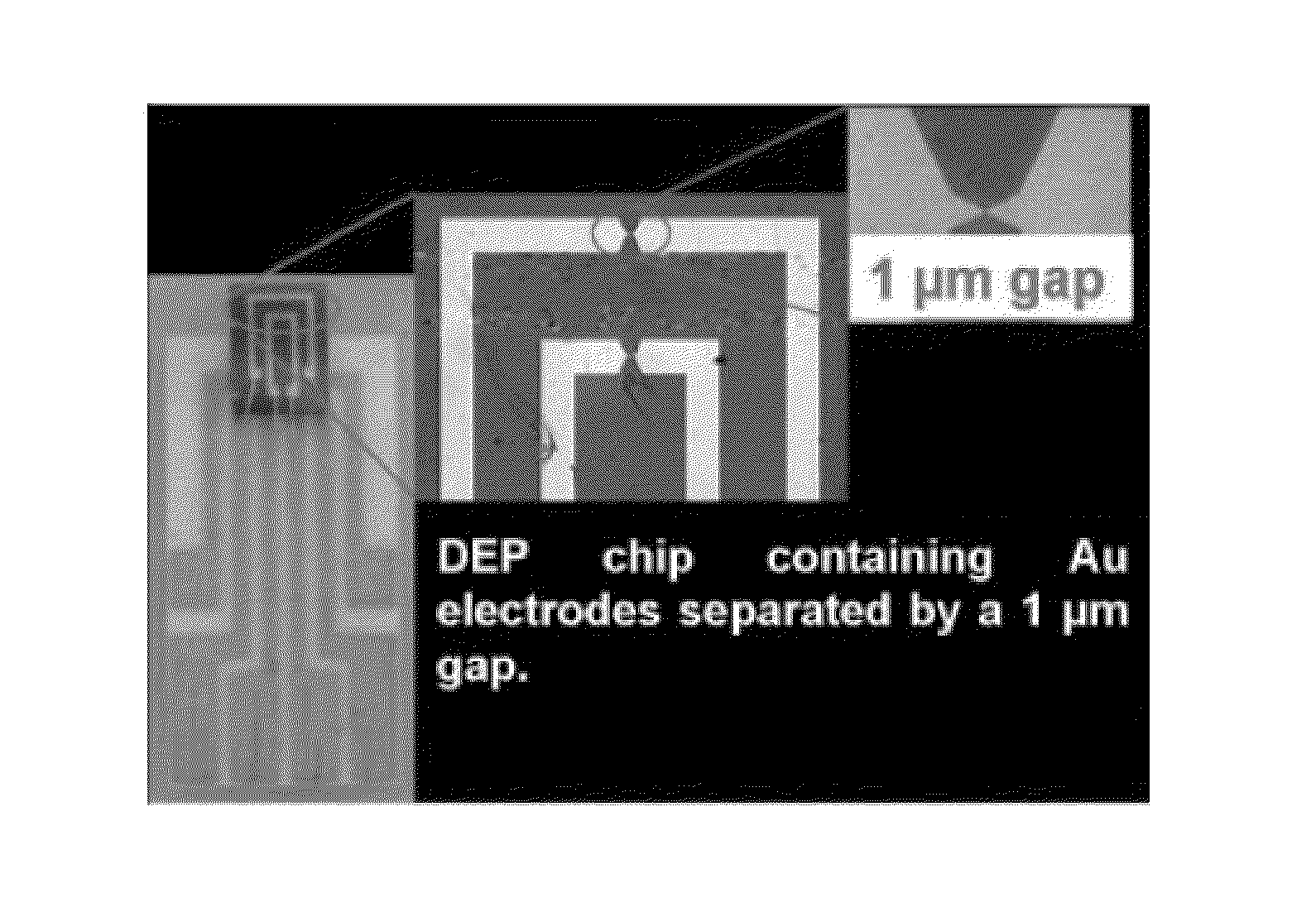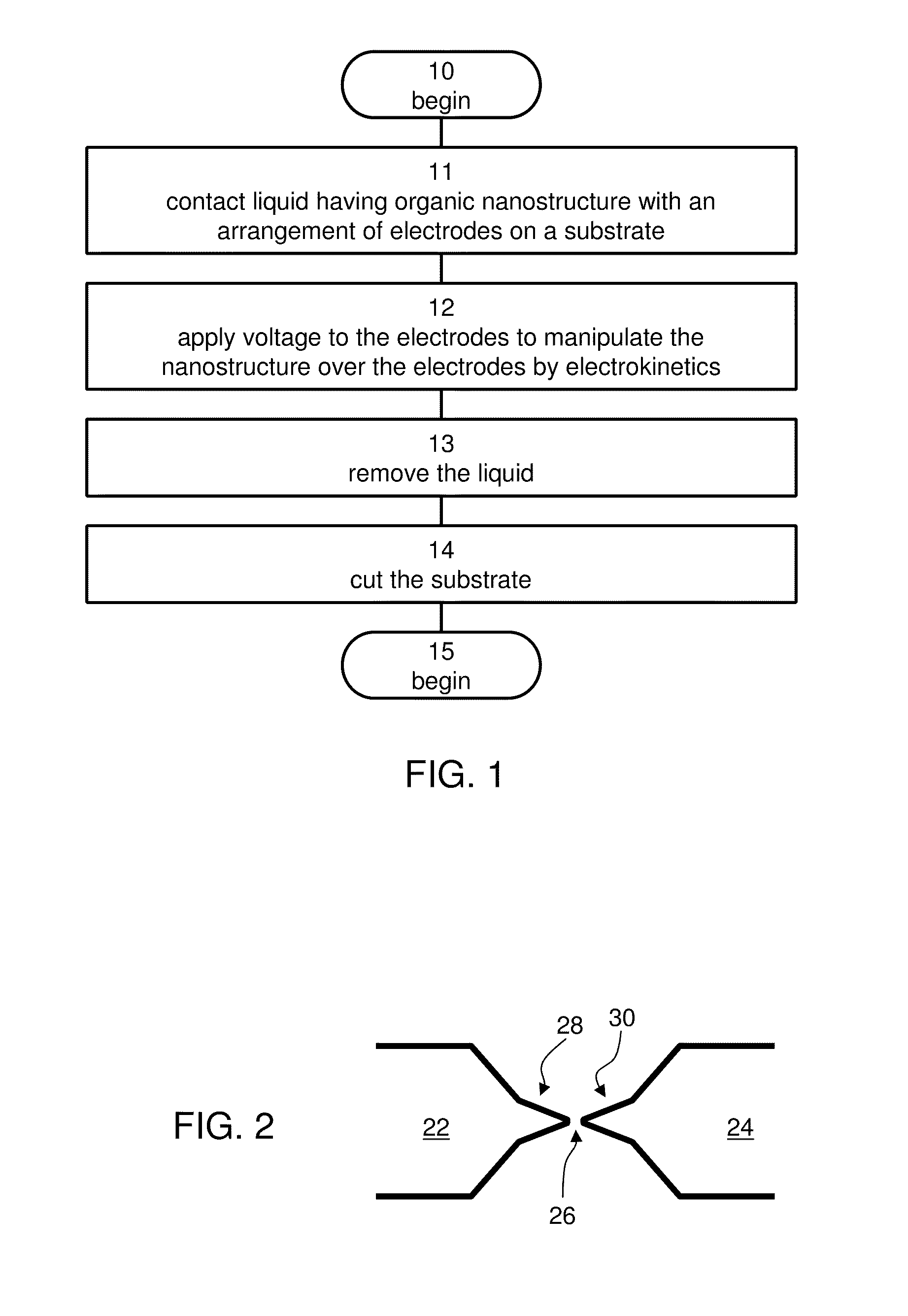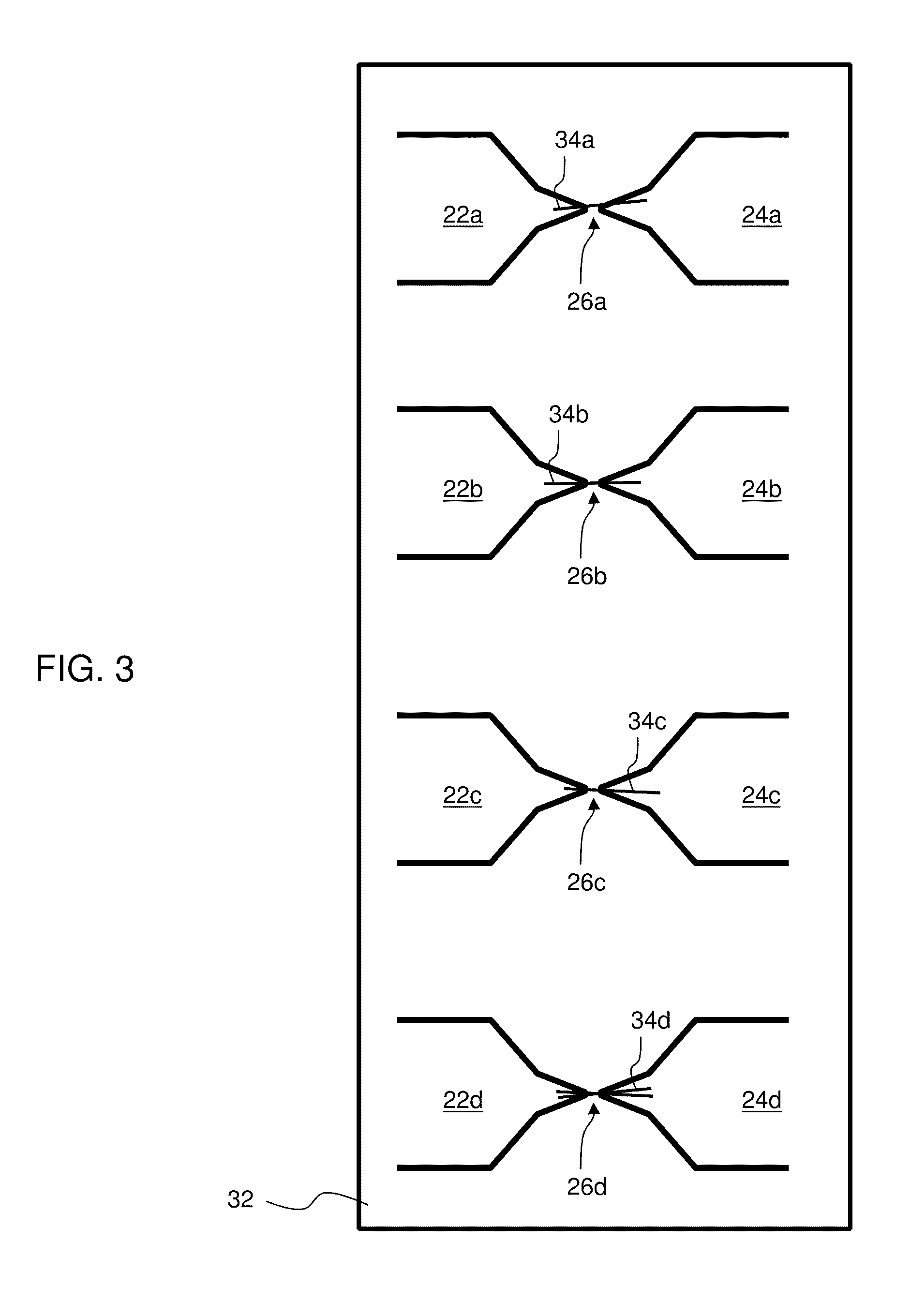Method and system for manipulating organic nanostructures
- Summary
- Abstract
- Description
- Claims
- Application Information
AI Technical Summary
Benefits of technology
Problems solved by technology
Method used
Image
Examples
example 1
This Example describes experiments in which peptide nanotubes were immobilized onto electrode structures by dielectrophoresis (DEP), according to some embodiments of the present invention.
Materials and Methods
A DEP microchip was fabricated according to some embodiments of the present invention by optical lithography on a silicon wafer following a protocol previously described in Dimaki, M. and Boggild, P., Nanotechnology 2005, 16, 759-763. Briefly, SiO2 was grown on top of a silicon wafer as an insulating layer. A 1.5 m resist layer was spun on top of the oxide and a positive photolithography process was used in order to pattern the electrodes on the oxide. After development of the resistance 10 nm of titanium and 150 nm of gold were deposited on the wafer and a lift-off process using acetone was carried out to define the electrodes. The titanium layer enhanced the adhesion between the gold and the silicon oxide layer. FIG. 4A illustrates the fabrication steps. The final DEP microch...
example 2
This Example describes experiments performed according to some embodiments of the present invention for qualitative mapping of structurally different polypeptide nanotubes.
Electrostatic force microscopy (SPM) was used to distinguish between diphenylalanine nanotubes, silver filled nanotubes and silver wires placed on pre-fabricated SiO2 surfaces with a backgate. Substrates for the experiments were fabricated by the use of four inch 350 μm thick heavily p-doped silicon wafers. A 100 nm thick silicon oxide layer was grown on the substrates, the oxide on the back was removed by HF and a 20 nm layer was evaporated on the backside followed by a 500 nm layer of gold. For the casting of silver nanowires inside the peptide nanotubes an aliquot of 10 μL, of a boiling solution of AgNO3 was added to 90 μL, of a peptide nanotubes solution (aged for 1 night). After this 6 μL, of a solution of 1% citric acid was added until a final concentration of 0.038% citric acid was reached to serve as a red...
example 3
This example describes experiments performed according to some embodiments of the present invention for electrochemical characterization of four types of 8-amino acid peptide nanofibers, referred to below as NS, NC, CN and CS. The amino acid sequence of each type of nanofibers is listed in Table 3, below.
TABLE 3NSH2N-Asn-Ser-Gly-Ala-Ile-Thr-Ile-Gly-CONH2(SEQ ID NO: 1)NCH2N-Asn-Cys-Gly-Ala-Ile-Thr-Ile-Gly-CONH2(SEQ ID NO: 2)CNH2N-Cys-Asn-Gly-Ala-Ile-Thr-Ile-Gly-CONH2(SEQ ID NO: 3)CSH2N-Cys-Ser-Gly-Ala-Ile-Thr-Ile-Gly-CONH2(SEQ ID NO: 4)
The nanofibers are formed by dissolving different amounts of the peptide powder in distilled water at room temperature. Samples are incubated at room temperature during 4 days to get a higher density of nanofibers. As representative examples, SEM images of the NC and CN nanofibers are shown in FIGS. 16A-B, respectively.
Nanofibers and gold modified nanofibers were evaluated by cyclic voltammetry (CV) on different working electrodes, graphite, gold and p...
PUM
| Property | Measurement | Unit |
|---|---|---|
| Frequency | aaaaa | aaaaa |
| Frequency | aaaaa | aaaaa |
| Concentration | aaaaa | aaaaa |
Abstract
Description
Claims
Application Information
 Login to View More
Login to View More - R&D Engineer
- R&D Manager
- IP Professional
- Industry Leading Data Capabilities
- Powerful AI technology
- Patent DNA Extraction
Browse by: Latest US Patents, China's latest patents, Technical Efficacy Thesaurus, Application Domain, Technology Topic, Popular Technical Reports.
© 2024 PatSnap. All rights reserved.Legal|Privacy policy|Modern Slavery Act Transparency Statement|Sitemap|About US| Contact US: help@patsnap.com










